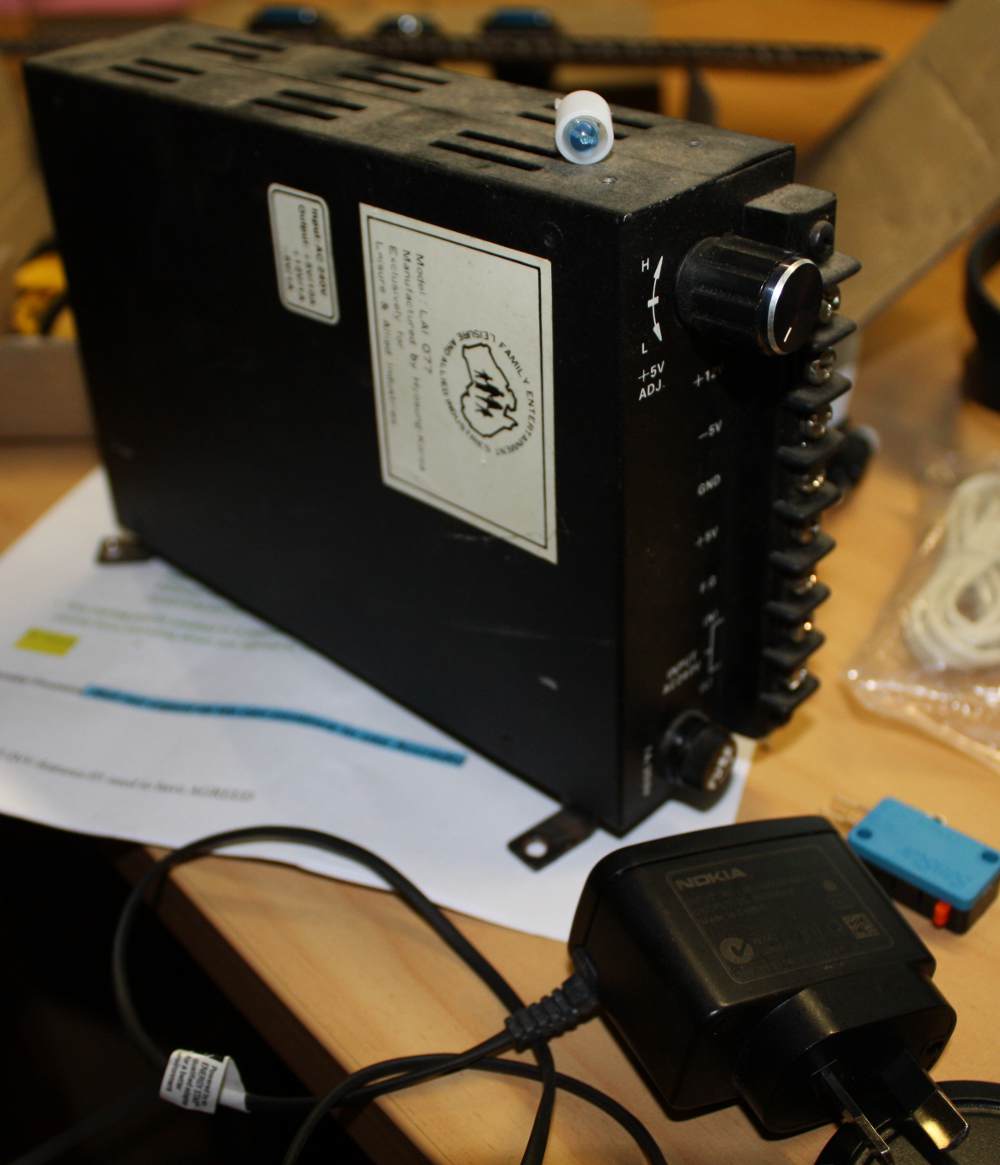White LEDs need a voltage of about 3 V to 3.2 V, YMMV. You place a series resistor to control the LED's current. A 0.5 V drop across the resistor will not give you good control, I'd rather go for at least a volt. So if you place the LEDs in parallel you'll need 4.5 V minimum. For parallel LEDs place one series resistor for each of them.
If your power supply can deliver a higher voltage you can l=place the LEDs in series. Then they will need 9V to 9.6 V, or thereabout. Again a series resistor for at least 1 V drop, and you come up close to 12 V.
To calculate the value of the series resistor you need the LED's current requirement. Suppose this is 20 mA, then for the 12 V supply with the 3 LEDs in series you need
\$ R = \dfrac{12 V - 9.6 V}{20 mA} = 120 \Omega \$
If the LEDs' voltage is somewhat lower you'll have a higher current: 25 mA at 3.0 V LEDs.
If you want to use one of the 5 V supplies you get
\$ R = \dfrac{5 V - 3.2 V}{20 mA} = 90 \Omega \$
Again, at 3 V per LED you'll get a higher current: 22 mA. Note that the difference in current is smaller, which is because voltage tolerance compared with the resistor's voltage drop is smaller. That's why a minimum voltage drop of 1 V to 2 V is recommended.
edit
You added a link to the product, which says "coloured 12V LED". There are no 12 V LEDs. So this is either a LED with the required series resistor built-in, or an incandescent bulb. In the former case you can probably simply apply 12 V to it, as the site also suggests for the replacement LED. I'd love to have seen a polarity indication on it though.

